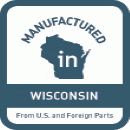Prior Robotics: A “Car Project” to create a self-driving, autonomous, Robotic Automobile.
It is an old story that many have asked about.
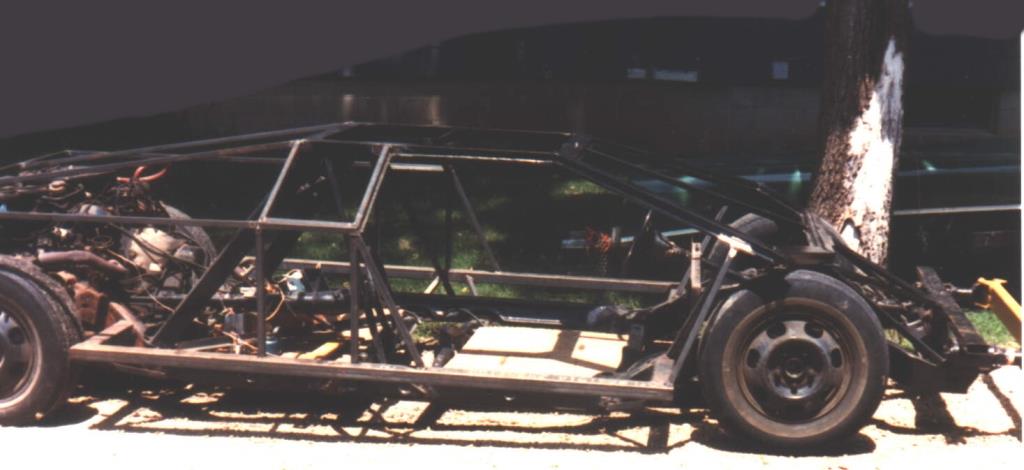 This was way before Tesla, and Waymo even existed, and this was also before the big automotive manufacturers seriously investigated this technology.
One member of
This was way before Tesla, and Waymo even existed, and this was also before the big automotive manufacturers seriously investigated this technology.
One member of That "Car Project" was developed as a “Robotic car”, a partially automated “Autonomous Vehicle” (AV).
That “Robotic Car” if completed, would be classified today as a Level 2 autonomous vehicle. But the car project was created to be more than just a self-navigating or self-driving vehicle. Two automation goals of that project were to create a better cruise control, now called “Adaptive Cruise Control” (ACC) for vehicle speed control and a means of lane positioning and curve following.
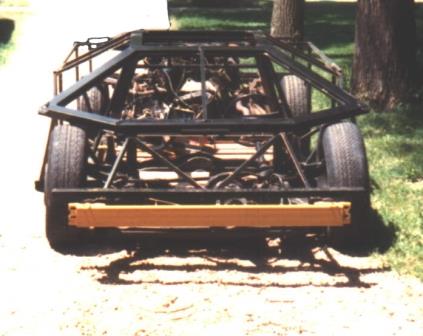
That level of autopilot ability was primitive, especially when comparing to today’s technology.
With about 30 years of progress, fully automated Advanced Drive Systems (ADS) at close to a Level 4 - 5 driverless technology have emerged. Many of the other “Robotic Car,” project features will not be mentioned or disclosed, no one has implemented them yet. (Or thought of them?)
And to be fair, back then; we did not think of such things like traction control, hybrid electric propulsion, or using GPS and GIS. GPS enabled GIS? What was that? We all know about it now.
Without letting the IP cat out of the bag, here are some design guidelines of the initial project.
It was a low profile, long vehicle. Designed at the maximum width that the regulations of that time allowed. But, using the hardware of that era, we are talking about of a lot of cast iron. Heavy Metal.

To support all that era’s electronics and computers needed for the vehicle to operate robotically,
Plus, the lead-acid batteries to help run them, would take a lot of volume and support structure. The car projects long length was required to fit in the equipment. The long vehicle length would cause maneuvering issues, so the robotic car project was designed to use full, four-wheel steering. The 4-wheel steering design enabled the rear wheel steering angles to match the front wheel steering angles. This would allow for very tight turns, crabbing (lateral moves), and front fixed/rear steer movements. Almost qualified as having holonomic vehicle movement capabilities. Four-wheel steering is just what the car project needed for backing up a trailer, or maneuvering in close quarters under computer control.The vehicle was a designed and overbuilt in case it blew a fuse, smoked, and ended up crashing. Airbags were just getting going, and not really an option.
But, considering insurance, technology, regulations, gas milage; it was hard justifying continuing its construction. The updated regulations coming out after late-January 1993, put the project on hold, and as the regulatory climate went even more unfavorably negative, put an end to the project.
The project hardware was sold and shipped from Wisconsin to California later in the mid-1990’s.
Note: the IP property for the robotic car project was not disclosed or transferred in the sale. This was pre
The “Robotic Car” project’s aerodynamic features were engineered into the automobiles design, and several wind resistance reduction methods were employed. Such air drag reduction concepts are weak by today’s standards, but were better than some current production models today.
The car projects basic automotive design lacked some of today’s technologies like aluminum engine construction, electronic computerized ignition, fuel injection, variable valve timing, anti-lock brakes, traction control and the list goes on.
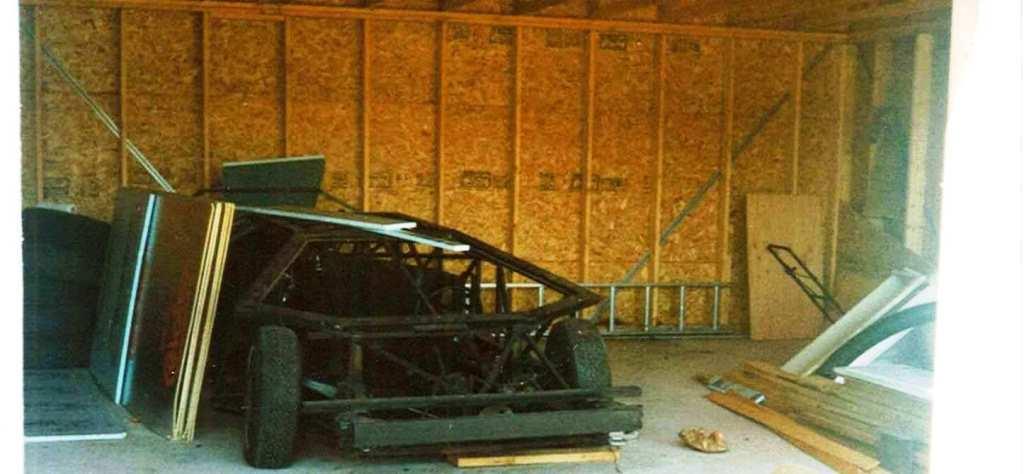
For a generic vehicle Description and Overview of the “Robotic Car”:
| Item | Specification | |
|---|---|---|
| Wheel Base: | Approximately 130” | |
| Length: | Approximately 240” | |
| Width: | Approximately 80” | |
| Height: | Approximately 44” | |
| Weight: | Approximately 7,000 lbs. road ready | |
| Weight: | Approximately 5,500 lbs. (Without Automation related items: Computers, batteries, electronics, drives motors, etc.) | |
| Configuration: | 2WD, Rear engine, full 4-wheel steering, 2-passenger, side by side seating. | |
| Power Plant: | 7.5 Liter Normally Aspirated V8 | |
| Automatic Transaxle: | Under 7.7kg (17 lbs.) | |
| Turning Radius: | Approximately 15’ (non-drift turning circle Approximately 30’) | |
| Doors: | 2 - electric servo driven (top-front scissor pivot) doors | |
| Trunk/Frunk: | None. Behind the seat storage available | |
| Performance: | Terrible by today’s standards. But 400 Hp with a moderately low Cd does help. | |
| Video Cameras: | 9 - B/W analog cameras | |
| Computers: | 14 - PC level computers | |
| Electronics Power Load: | 6,000 watts, about 8 - Hp |
This was an automated vehicle project with problems that ended a decade before the CYCOGS ® Company was formed.
Such problems included: vehicle weight, fuel economy, technology, and costs.
The project would be very risky to use, dangerous and would be prone to break downs.
In hindsight, it was too soon for the project. We had hoped technology would move faster and resolve some of the issues.
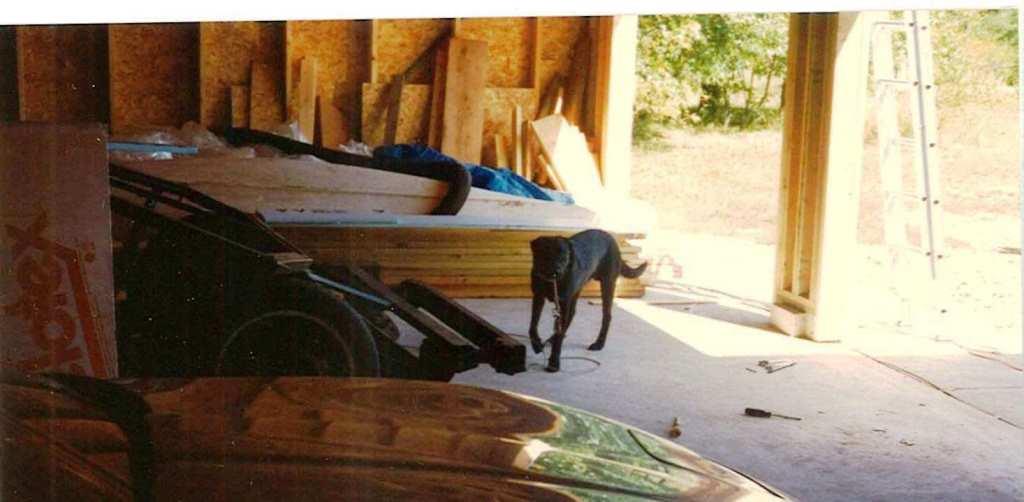
Technology at that time was a limitation, but not a barrier.
This was the Era of the CRT monitor, 286/386 CPU PC’s, 640K RAM, running DOS, and 200 Mbyte hard drives. Couple this with a 5-minute boot up and 10 Mbps networks. Unreliable, need we say more?
What about the Internet? The World Wide Web (WWW) stated in 1991. Primary sensing was using low resolution analog cameras and B/W frame grabbers. Usable LIDAR/RADAR ? Nope. Sonar for distance measurements was sketchy and inaccurate. GPS and GIS mapping were not really around in the early 1990s. Lasers Diodes, not really available for consumers in the early 1990s.
Insurance: Getting insurance coverage was not good, close to impossible. Regulation: Pretty much banned and down the tubes in 1993. Modeling: Primitive 2D AutoCAD. Mock-ups ruled the day.
Physical modeling and 2D CAD, partially on paper, was hard for doing automotive engineering. We certainly appreciate all the work that goes into any design now.
APU auxiliary power and air conditioning (A/C) were mandatory requirements. Fuel usage at a standby, one point five to two GPH just sitting still. With a 5-minute+ bootup, you would need to keep things running.
The finished project, if insurable and allowed to operate on the roads, would not be the safest, and most likely dangerous. Computers were not very powerful or reliable, and using black and white low resolution analog cameras and sonar sensors for the primary sensing was scary. Unthinkable in today’s GPS enabled GIS mapped environment.
 As an add-in: we have been asked – how fast, as in top speed. The car project was never completed, and only driven below the speed limts, but by using some formulas and estimates:
As an add-in: we have been asked – how fast, as in top speed. The car project was never completed, and only driven below the speed limts, but by using some formulas and estimates:
Estimated 400 Hp at the crankshaft, with a possible 322 Hp at the rear wheels, using an automatic transaxle.
322 Hp = 240,115 watts of power = P.
A = Area – 80” wide x 44” tall or 2.03 M x 1.1 M, for an area of 2.27 M2.
Air Drag coefficient c = Cd about 0.32, D = air Density – 1.25.
Using the formula V = (2 *P/(c*D*A))1/3 = top speed in M/sec.
So, for you calculator users V = (2 * 240115 / (.32 * 1.25 * 2.27))x(1/3) = 81 m/sec. Or 181 mph.
Using the specs for one of our company minivans: A = 2M x 1.75 = 3.5 M2.
Power = 283 Hp, at the wheels about 250 Hp, 186,425 watts.
Drag coefficient Cd looks like .33.
So, for you calculator users V = (2 * 186425 / (.33 * 1.25 * 3.5))x(1/3) = 63.68 m/sec. Or 142 mph for the minivan.
But, the minivan has a speed limited governor set to about 113 mph due to tire speed ratings.
Status of the “Robotic Car” project:
Waiting eagerly for better technology, so on hold for a patient while. Still under R&D/IP development, patents should precede it.
After a couple of experimental BD-5b kits, we gained much needed experience with aluminum construction. Aluminum has taken off as a vehicle construction material, not to mention carbon fiber.
We now have fast, reliable computers and better operating systems, modern CPU/GPU development has taken off, 5-10 Gbps networking/EtherCAT is now available, along with Wi-Fi and Cellular networks. Just look at your cell phone.
And we have fast, high resolution LIDAR and RADAR sensors, color video cameras, lasers, and technologies like GPS with GIS mapped databases, Li-ion batteries, smaller and more efficient electronics, and the list goes on.
Development wise, we currently utilize much more capable computers for operating software; 3D CAD, Simulation, Finite Element, and computational fluid dynamics software tools are commercially available. We even have Robot Operating Systems and Open-source autonomous vehicle systems.
Our creations and IP from way back is still shaping up, and we think we are still ahead in many areas, some of the ideas and designs have been unconceptualized by others. We have that perspective from working on automotive, unmanned vehicles and robotics engineering.
It was a car project with many years of R&D before even starting it. Unfortunately, the robot car project was designed and under construction, 15 years or more before the technology and society was really ready. If you check back in 2035, that year's current technology will make our 2023 technology look primitive.

Our autonomous vehicle project construction on the original car project may have stopped, but the robot car project development has continued.
We have developed a great deal of proprietary IP concepts, designs, devices, and systems. Another autonomous vehicle car project is planned and lives in CAD/Simulation and other software systems to go with our continued development.
We plan to have this new car project under construction again. And the new project vehicle would most likely be a
Needless to say, we are not completely stupid. We would use other companies developed technology if available – we are not developing things like engines, transmissions, etc. We may alter them, but having a dealer for a defective part is a benefit. We do look forward to bringing our technology to fruition.
Thank you for checking out the Prior Robotics: A “Car Project” to create a self-driving, autonomous, Robotic Automobile web page. This purpose-built vehicle, we like to think of is as a living system, still will not be compact, the fastest, nor the sexiest, nor the most fuel efficient, but it will be ours.
Please contact us here at the
Sales E-mail: sales@CYCOGS.com
The Robotic Car Project is cautiosly under development and the car project may be offered in advance as a customized manufactured system; Standard models may yet be unavailable at this time.
As the development effort in core technology and novel concepts continues, the
Customizations and other intriguing options may undoubtedly result in an additional cost.
Liability Disclaimer: The
Your purchase properly indicates you fully assume the risk of its proper use, operation, maintenance and its subsequent installation and end user training and potential liability.
The
The
Sales E-mail: sales@CYCOGS.com
The
The
The
Sales E-mail: sales@CYCOGS.com
